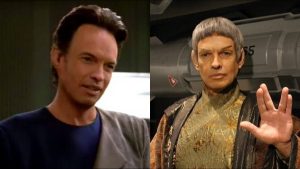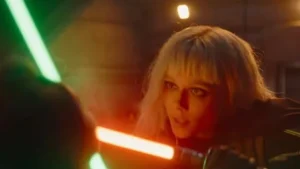Ahsoka Tano’s departure from the Jedi Order, as depicted in “Star Wars: The Clone Wars,” set the stage for her narrative arc in “Ahsoka” series. Introduced as the Padawan of Anakin Skywalker in the animated film “Star Wars: The Clone Wars,” her journey was extended through various animated productions by Lucasfilm. Despite her initial presence being confined to Star Wars’ animated realm, Ahsoka has transcended her medium to emerge as one of the franchise’s most cherished and iconic characters. This evolution culminated in her seamless transition to the live-action domain during the era of the New Republic, as witnessed in “The Mandalorian,” “The Book of Boba Fett,” and the upcoming “Ahsoka” series.
In the era of the prequels, Ahsoka emerged as a prominent combatant throughout the Clone Wars, playing a pivotal role in the conflict. Despite her steadfast allegiance to the Jedi Order’s principles, her tenure within the Order was notably brief, extending beyond the events of the prequel trilogy. This divergence ultimately led Ahsoka to adopt the identity of Fulcrum, serving as a key contact for the Rebel Alliance during the tumultuous period of the Galactic Civil War. This transformative phase of her journey was prominently depicted in “Star Wars Rebels,” a series that will profoundly shape the narrative trajectory of the upcoming “Ahsoka” series.
Also Read | Ahsoka: Who is Morgan Elsbeth?
As the narrative focuses on the time of the New Republic, Ahsoka’s significance and pivotal role during this era invite a thorough examination of the circumstances that initially prompted her departure from the Jedi Order. Unearthing the reasons behind her decision holds immense value in comprehending the unfolding storyline of the “Ahsoka” series. The ramifications of her departure from the Order are poised to reverberate significantly and contribute to the intricate tapestry of the narrative.
“Star Wars: The Clone Wars” featured one of its most compelling story arcs in its fifth season, providing a profound insight into why Ahsoka Tano ultimately chose to depart from the Jedi Order. The series masterfully utilized its runtime to delve into the intricate psychology of various characters, offering an exploration of their perspectives regarding the overarching conflict. This introspection extended to the Jedi Order itself, as the show delved into the ethical dilemmas surrounding their role as generals against the Separatist forces.
Central to this thematic exploration was Ahsoka’s character arc. Within this arc, Ahsoka’s unwavering faith in the prequel-era Jedi ideals rapidly eroded. The focal point was her unjust implication in a grave incident—the bombing of the Jedi Temple on Coruscant. The narrative unfolded as Ahsoka found herself fleeing from the Jedi Order and the Republic, both of which abruptly turned against her despite her unwavering dedication to their shared objectives.
Also Read | Ahsoka Tano will train Sabine Wren in the ways of the Jedi in Star Wars spinoff
Her path eventually converged with Asajj Ventress, an unexpected alliance that led to a pivotal revelation. Ahsoka uncovered the truth that her friend Bariss Offee was the mastermind behind the bombing, the resulting deaths, and the elaborate plot to incriminate Ahsoka herself.
This narrative arc not only showcased the depths of Ahsoka’s character but also posed profound questions about the moral compass of the Jedi Order and the broader consequences of their actions during the Clone Wars. The arc played an instrumental role in shaping Ahsoka’s perspective and culminated in her decision to step away from the Order, laying the foundation for her future journey and the narratives that would subsequently unfold in the Star Wars universe.







